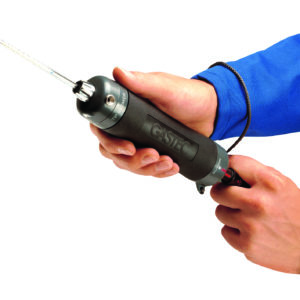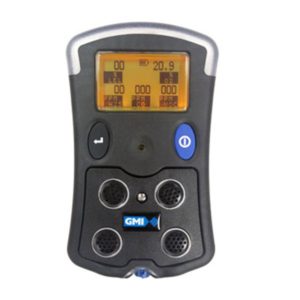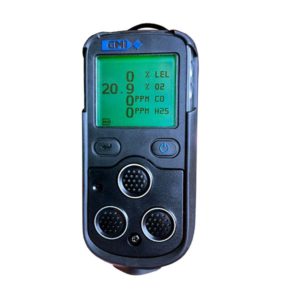Confined Spaces
Confined spaces are typically found in tanks, pipelines, container vessels, sewers, pipelines, shipping containers, manholes or enclosed areas. By definition, a confined space has temporary or restricted access, they’re below two metres in length, width and height, have a volume of less than 100 m3 with limited means of ventilation.
Pre-Entry Checks
Pumped multi-gas detectors or detector tubes with attached hoses or probes are recommended to ensure that it’s safe to enter a confined space.
Entering Confined Spaces
A davit or tripod is used to safely access a confined space with no fixed anchor point such as a ladder. A fall arrest system securely lowers or raises workers and equipment.
Working in a Confined Space
Poisonous substances such as rotting materials or stagnant water in confined spaces cause poor air quality resulting in insufficient breathable air.
Gas detectors should be worn for continuous monitoring of personal space to give warning to the threat of any hazardous and flammable gases.
If breathing air is poor, breathing apparatus must be considered to provide a continuous flow of safe, breathable air.
Rescue
Accessing a confined space may be at height. A fall arrest rescue block or a Self-Retracting Lifeline (SRL) is mounted to a rescue tripod or an overhead anchor point will limit free fall distance or lock to control speed. The device can also be used to lift or to lower the casualty to safety.
Escape
For quick and safe exit to escape or rescue, our confined space kit includes all the components needed to safely enter and exit a confined space
Case Study - CO2 In Breweries
Learn about the hidden dangers of carbon dioxide (CO2) in breweries and the essential measures to ensure safety. Uncontrolled levels of CO2 can lead to severe health hazards, even suffocation, making proper monitoring absolutely crucial. Discover how the accumulation of CO2 during fermentation and storage processes can create hazardous pockets. Implementing a comprehensive gas detection system, including fixed CO2 sensors and personal detectors, is crucial to protect brewery personnel.
Case Study - a1-cbiss Engineer a Brewery Carbon Dioxide Monitoring System
Discover how a1-cbiss helped two major breweries in the UK ensure health and safety compliance with a tailored Carbon Dioxide monitoring system. With elevated CO₂ levels during fermentation, a1-cbiss designed a solution using advanced gas detection technology. The system provides visual warnings, integrates with ventilation systems, and offers real-time data acquisition and reporting.
Talk with the Experts
Contact us - Our team of application specialists can assist you with system design, installation, maintenance, and repair. As a systems integrator, we provide end-to-end support to ensure your facility has a reliable and effective gas detection system in place.
Sign up for more information - For more information on protecting your staff from the dangers of gas leaks, sign up for our emails.






